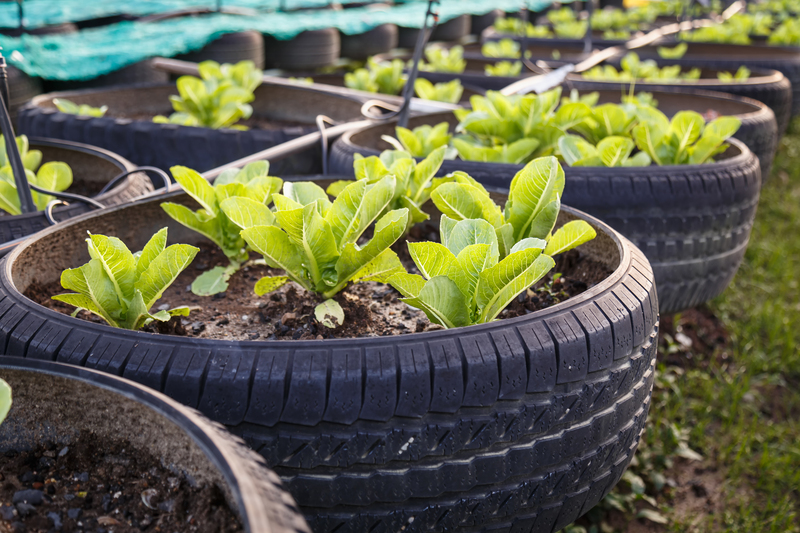Top Methods for Shrinking Manufacturing Waste Streams
In today's rapidly evolving industrial landscape, minimizing waste is not only an environmental necessity but also a strategic advantage. Reducing waste streams in the manufacturing process can lead to cost savings, improved efficiency, and a competitive edge. In this article, we explore the top methods for shrinking manufacturing waste streams and how these can contribute to a more sustainable and profitable operation.
The Importance of Reducing Waste Streams
The manufacturing sector is a significant contributor to global waste production. From excess materials to energy inefficiencies, each facet of manufacturing holds potential for waste reduction. Minimizing waste not only supports environmental sustainability but also enhances a company's reputation and operational efficiency.

1. Lean Manufacturing Principles
Lean manufacturing is a methodology focused on reducing waste without sacrificing productivity. By adopting lean principles, manufacturers can streamline processes, reduce excess material use, and improve throughput.
Key Lean Strategies
- Just-In-Time (JIT) Production: Producing only what is needed, when it is needed, helps in minimizing waste associated with overproduction.
- 5S System: A workplace organization method comprising Sort, Set in order, Shine, Standardize, and Sustain to maintain orderly operations and reduce waste.
- Value Stream Mapping: Visualizing the production process to identify and eliminate non-value-adding activities.
2. Recycling and Reuse
Implementing a recycling program can significantly reduce waste streams in manufacturing by converting waste into reusable materials.
Innovative Recycling Practices
- Closed-loop Recycling: Using waste materials as input for new production, creating a circular economy.
- Material Recovery Facilities: Establishing facilities to sort and adjust waste streams for effective recycling and reuse.
- Product Design for Disassembly: Designing products with end-of-life recycling in mind, facilitating easy disassembly for materials recovery.
3. Energy Efficiency
Optimizing energy use in manufacturing not only reduces waste but also improves the overall sustainability of the process.
Methods to Enhance Energy Efficiency
- Energy Audits: Regular assessments to identify areas of energy wastage and opportunities for savings.
- Upgrading Equipment: Replacing outdated machinery with energy-efficient alternatives.
- Process Optimization: Streamlining operations and reducing energy consumption by improving process timings and reducing idle times.
4. Waste Segregation and Minimization
Proper waste segregation helps in identifying materials that can be reduced, reused, or recycled more efficiently.
Effective Waste Segregation Techniques
- Employee Training: Educating employees on proper waste categorization and its benefits.
- Color-Coded Bins: Using standardized bins for different waste types to simplify segregation.
- Regular Waste Audits: Conducting audits to evaluate the effectiveness of waste segregation practices and improve upon them.
5. Process Redesign
Revisiting and redesigning manufacturing processes can significantly reduce waste streams by recognizing inefficiencies early on.
Steps for Process Redesign
- Process Mapping: Documenting each step in the manufacturing process to identify bottlenecks and areas of waste generation.
- Continuous Improvement Programs: Implementing Kaizen or other improvement initiatives to encourage regular assessment and enhancement of processes.
- Advanced Manufacturing Technologies: Leveraging automation and robotics to enhance precision and reduce materials waste.
6. Supply Chain Collaboration
Collaborating with supply chain partners can provide innovative solutions for waste reduction across the entire product lifecycle.
Create Sustainable Supply Chains
- Suppliers Assessment: Evaluating supplier waste practices and selecting partners with robust sustainability practices.
- Joint Initiatives: Partnering with suppliers to develop waste-reducing packaging or materials.
- Inventory Management: Optimizing inventory levels to reduce the waste of surplus materials or products.

7. Employee Engagement
Engaging employees in waste reduction efforts can foster a culture of sustainability and encourage innovative ideas for minimizing waste streams.
Driving Employee Engagement
- Incentive Programs: Offering rewards for employees who devise successful waste reduction strategies.
- Open Communication Channels: Establishing forums or meetings for sharing waste reduction ideas and feedback.
- Training Workshops: Regularly updating employees on best practices and new technologies for waste reduction.
Conclusion
The task of shrinking waste streams in manufacturing is a multifaceted challenge requiring a strategic approach that includes technological innovation, process efficiency, and active employee involvement. By implementing these top methods, manufacturers can create sustainable practices that not only protect the environment but also enhance profitability and productivity.
By adopting these solutions, companies position themselves at the forefront of the industry, leading the charge in delivering environmentally sustainable engineering while maintaining robust, efficient, and cost-effective operations. As regulatory pressures increase and consumer awareness grows, adopting these strategies will become a necessity rather than a choice.